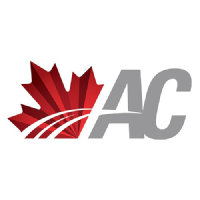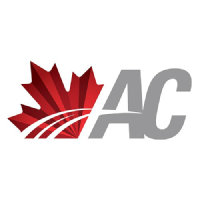
AutoCanada Inc
TSX:ACQ


| US |

|
Johnson & Johnson
NYSE:JNJ
|
Pharmaceuticals
|
| US |

|
Berkshire Hathaway Inc
NYSE:BRK.A
|
Financial Services
|
| US |

|
Bank of America Corp
NYSE:BAC
|
Banking
|
| US |

|
Mastercard Inc
NYSE:MA
|
Technology
|
| US |

|
UnitedHealth Group Inc
NYSE:UNH
|
Health Care
|
| US |

|
Exxon Mobil Corp
NYSE:XOM
|
Energy
|
| US |

|
Pfizer Inc
NYSE:PFE
|
Pharmaceuticals
|
| US |

|
Palantir Technologies Inc
NYSE:PLTR
|
Technology
|
| US |

|
Nike Inc
NYSE:NKE
|
Textiles, Apparel & Luxury Goods
|
| US |

|
Visa Inc
NYSE:V
|
Technology
|
| CN |

|
Alibaba Group Holding Ltd
NYSE:BABA
|
Retail
|
| US |

|
JPMorgan Chase & Co
NYSE:JPM
|
Banking
|
| US |

|
Coca-Cola Co
NYSE:KO
|
Beverages
|
| US |

|
Walmart Inc
NYSE:WMT
|
Retail
|
| US |

|
Verizon Communications Inc
NYSE:VZ
|
Telecommunication
|
| US |

|
Chevron Corp
NYSE:CVX
|
Energy
|
Utilize notes to systematically review your investment decisions. By reflecting on past outcomes, you can discern effective strategies and identify those that underperformed. This continuous feedback loop enables you to adapt and refine your approach, optimizing for future success.
Each note serves as a learning point, offering insights into your decision-making processes. Over time, you'll accumulate a personalized database of knowledge, enhancing your ability to make informed decisions quickly and effectively.
With a comprehensive record of your investment history at your fingertips, you can compare current opportunities against past experiences. This not only bolsters your confidence but also ensures that each decision is grounded in a well-documented rationale.
Do you really want to delete this note?
This action cannot be undone.

| 52 Week Range |
14.56
35.32
|
| Price Target |
|
We'll email you a reminder when the closing price reaches CAD.
Choose the stock you wish to monitor with a price alert.

|
Johnson & Johnson
NYSE:JNJ
|
US |

|
Berkshire Hathaway Inc
NYSE:BRK.A
|
US |

|
Bank of America Corp
NYSE:BAC
|
US |

|
Mastercard Inc
NYSE:MA
|
US |

|
UnitedHealth Group Inc
NYSE:UNH
|
US |

|
Exxon Mobil Corp
NYSE:XOM
|
US |

|
Pfizer Inc
NYSE:PFE
|
US |

|
Palantir Technologies Inc
NYSE:PLTR
|
US |

|
Nike Inc
NYSE:NKE
|
US |

|
Visa Inc
NYSE:V
|
US |

|
Alibaba Group Holding Ltd
NYSE:BABA
|
CN |

|
JPMorgan Chase & Co
NYSE:JPM
|
US |

|
Coca-Cola Co
NYSE:KO
|
US |

|
Walmart Inc
NYSE:WMT
|
US |

|
Verizon Communications Inc
NYSE:VZ
|
US |

|
Chevron Corp
NYSE:CVX
|
US |
This alert will be permanently deleted.
AutoCanada Inc
AutoCanada, Inc. engages in the operation of franchised automobile dealerships. The company is headquartered in Edmonton, Alberta. The company went IPO on 2006-05-11. The firm offers a diversified range of automotive products and services, including new vehicles, used vehicles, vehicle leasing, vehicle parts, vehicle maintenance and collision repair services, extended service contracts, vehicle protection products and other after-market products. The company arranges financing and insurance for vehicle purchases by its customers through third-party finance and insurance sources. AutoCanada business, held through its subsidiaries, is the operation of franchised automobile dealerships in British Columbia, Alberta, Saskatchewan, Manitoba, Ontario, Quebec, Nova Scotia and New Brunswick. The company operates approximately 49 franchised dealerships, consisting of 21 brands, in eight provinces in Canada, a group in Illinois, United States. The company also offers a range of parts, service and collision repair services, warranties, and replacement and aftermarket automotive products.

AutoCanada, Inc. engages in the operation of franchised automobile dealerships. The company is headquartered in Edmonton, Alberta. The company went IPO on 2006-05-11. The firm offers a diversified range of automotive products and services, including new vehicles, used vehicles, vehicle leasing, vehicle parts, vehicle maintenance and collision repair services, extended service contracts, vehicle protection products and other after-market products. The company arranges financing and insurance for vehicle purchases by its customers through third-party finance and insurance sources. AutoCanada business, held through its subsidiaries, is the operation of franchised automobile dealerships in British Columbia, Alberta, Saskatchewan, Manitoba, Ontario, Quebec, Nova Scotia and New Brunswick. The company operates approximately 49 franchised dealerships, consisting of 21 brands, in eight provinces in Canada, a group in Illinois, United States. The company also offers a range of parts, service and collision repair services, warranties, and replacement and aftermarket automotive products.
This earnings call has not been analyzed yet.
If you’d like us to analyze this earnings call, click the "Request Earnings Call Analysis" button below.































